- The Interceptor Guitar & Bass: Introduction and history
- The Interceptor Guitar & Bass: 1st X-body Interceptor III
- The Interceptor Guitar & Bass: 2nd X-body Interceptor HH
- The Interceptor Guitar & Bass: 3rd style Interceptor HSS
- The Interceptor Guitar & Bass: 3rd style Interceptor SSS
- The Interceptor Guitar & Bass: The Interceptor Bass
With the (non-existent) Interceptor I and Interceptor III, the Interceptor II first appears on the June 1, 1983 price list. This 2-pickup version of the 1st X-body Interceptor finds its roots in 2 other models introduced in the same time frame: the HG-2 entry level model and the Cavalier.
Up to that moment, Magnetic Field Design (MFD) humbuckers had only been used on the F-100 and the G-200 as far as guitars are concerned. In his endless experimentation to find sonic nirvana, Leo had come up with 2 smaller footprint versions of this pickup: the GHB and HG-2R “Angled Offset”, referred to as “Offset-Humbucker™” in marketing material and covered by US patent 4,443,648. If one thinks of a humbucker version of the SC-2, which was introduced at the beginning of 1983, this makes perfect sense: use a GHB in the neck and HG-2R in the bridge position. But weirdly enough the HG-2 entry level model only has the straight GHB pickups and the Cavalier the angled HG-2R!
Of the first 7 or so built, each exceedingly special and rare with all gold hardware and cool 2-color Red/Black (or Red-over-Black as it is called in the corresponding price sheets) paint scheme, only 2 or 3 are of the Interceptor II variety. Of these, there has to be one with a maple fingerboard given that it appears in the ad slick. And the one built for Leo Fender himself is an Interceptor II with ebony fingerboard. It is part of the 4 Interceptors built for people at G&L and was entered in the sales log on August 24, 1983:

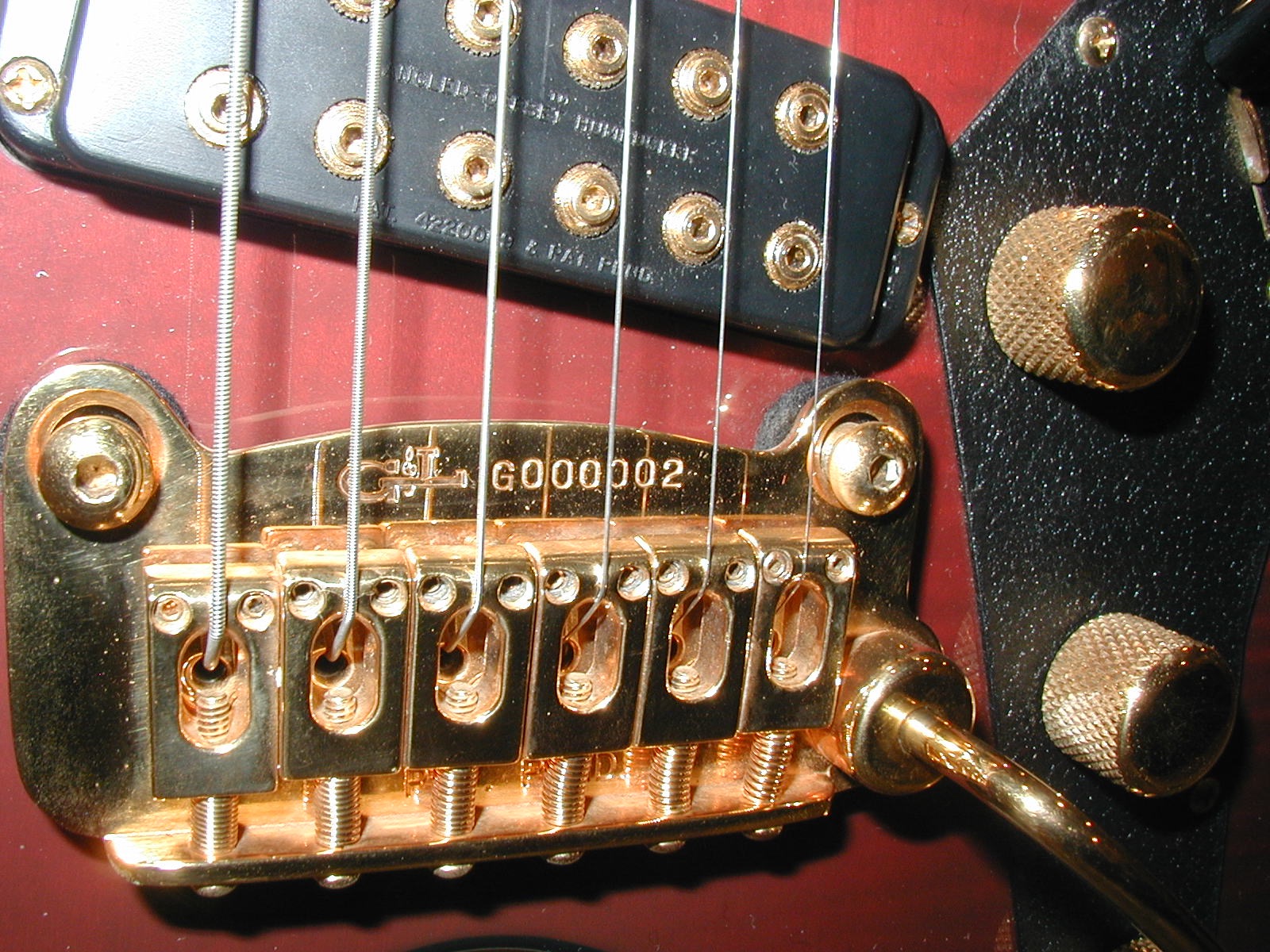
It stayed with Leo practically until the end of his life when it moved into Dale Hyatt’s collection. He wrote a 3 page letter as part of the provenance when it was sold to Gary Maki (aka Josey Wales) and now I am the 4th owner. Here is a picture of Dale holding the guitar on display in this post:
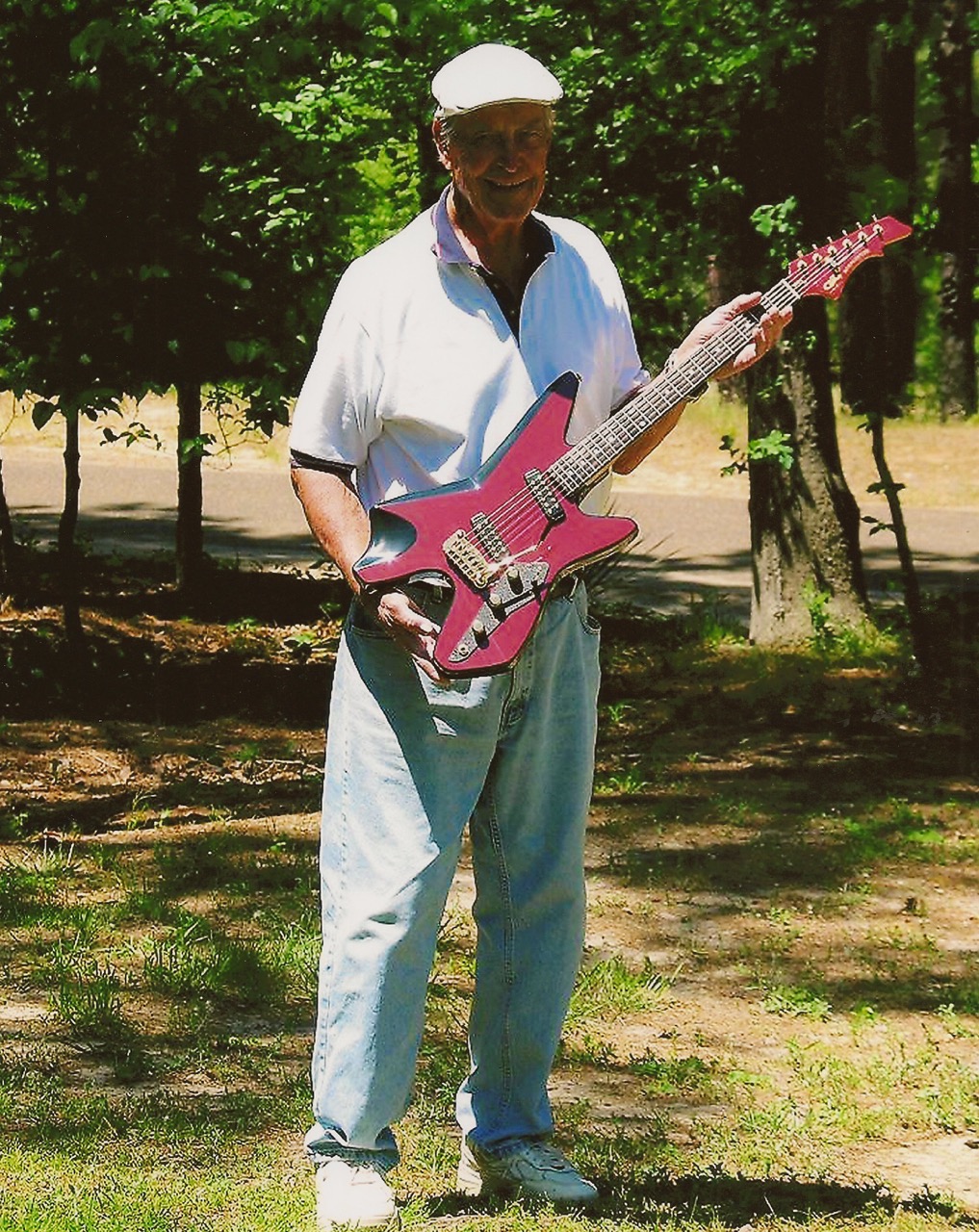
A lot of parts were not yet ready when these early guitars were put together and at different times it will be pointed out how G&L improvised to get them done. This starts with the case which is not completely form fit yet as it would be later on:
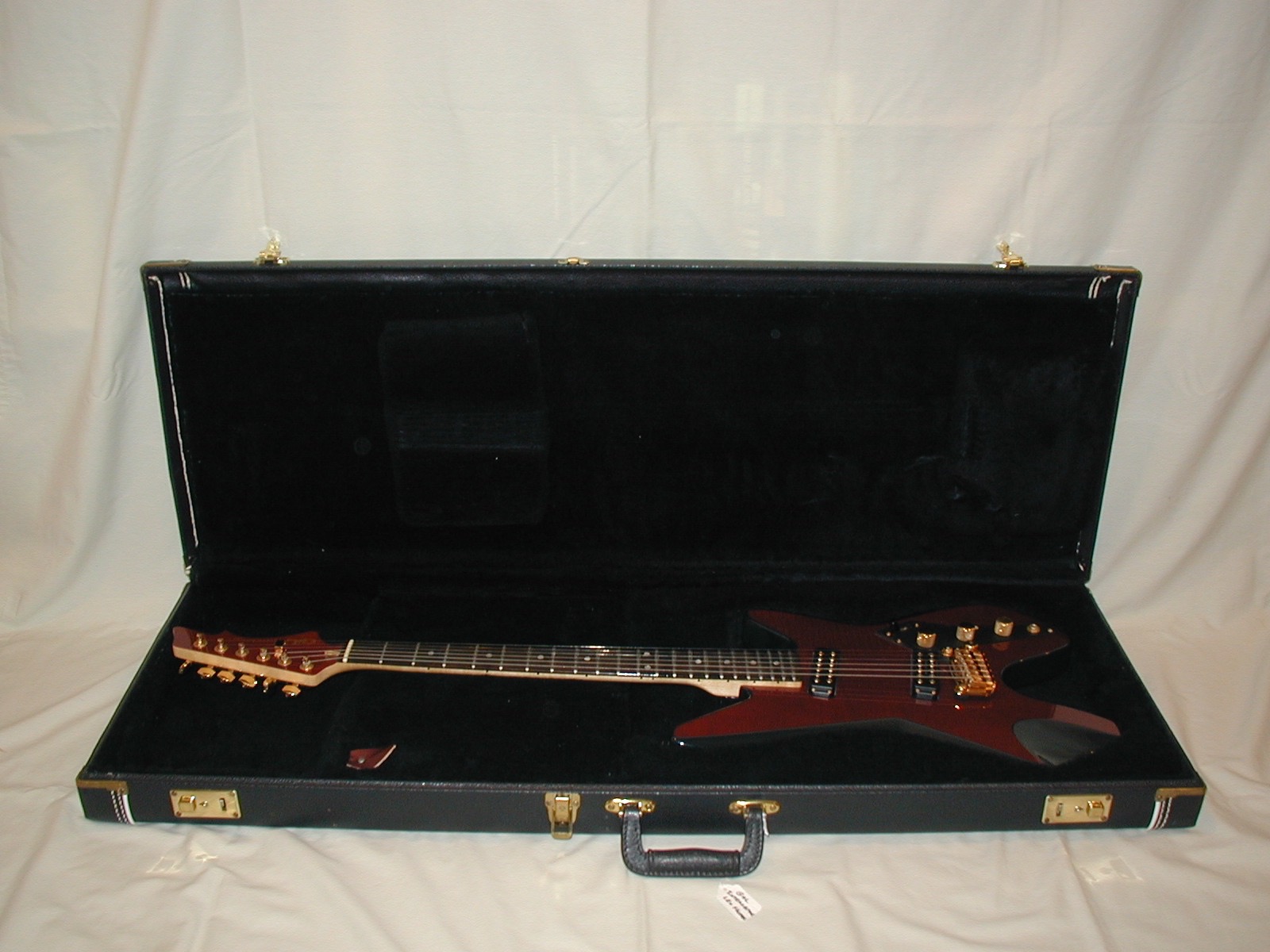
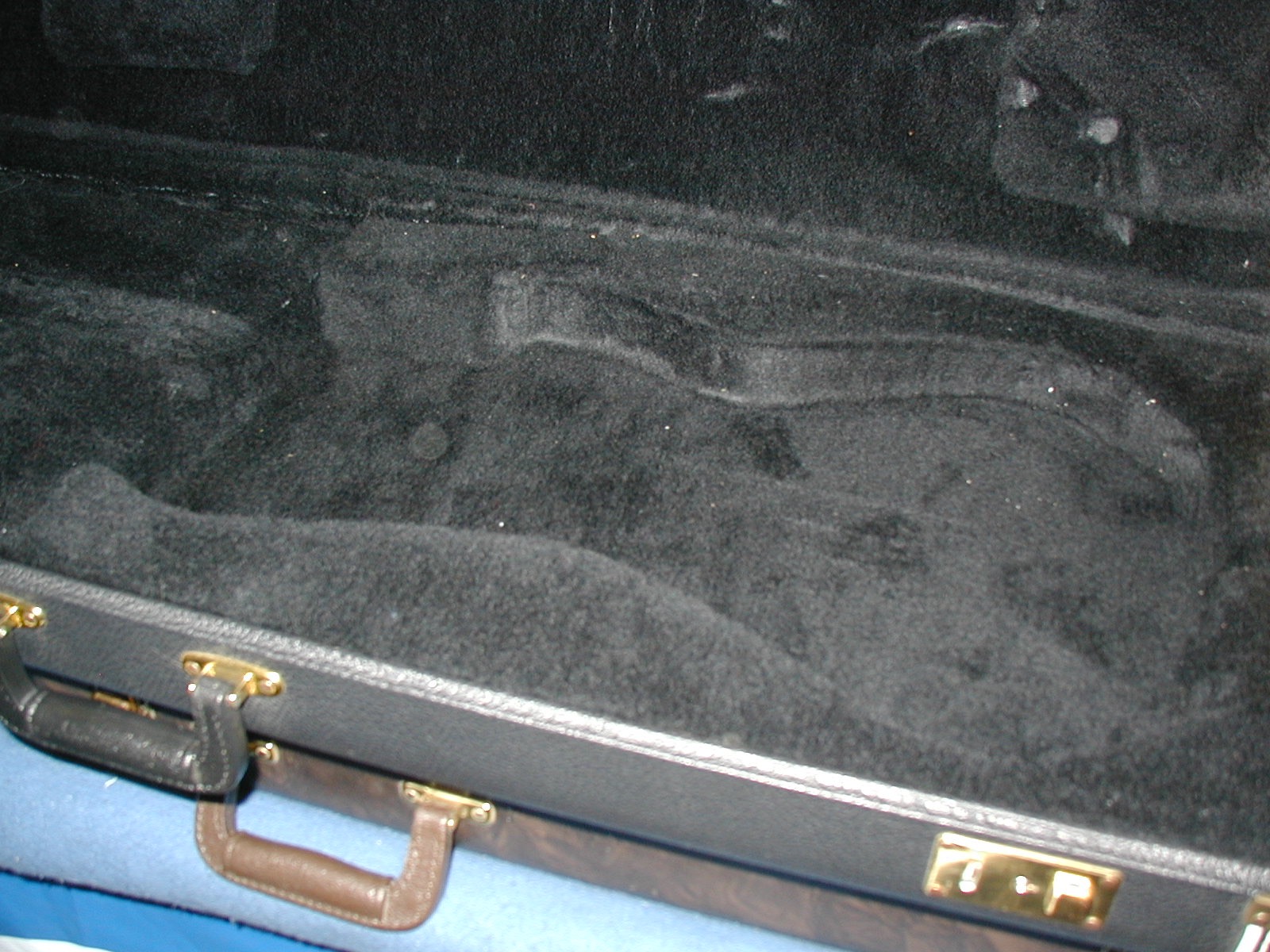
The design of the 1st style X-body Interceptor was a collaboration between many. Major contributions were provided by Lloyd Chewning, Leo Fender, George Fullerton, and Dale Hyatt but even some of the hourly workers provided input, The result was a shape of not just extraordinary beauty but also ergonomics:
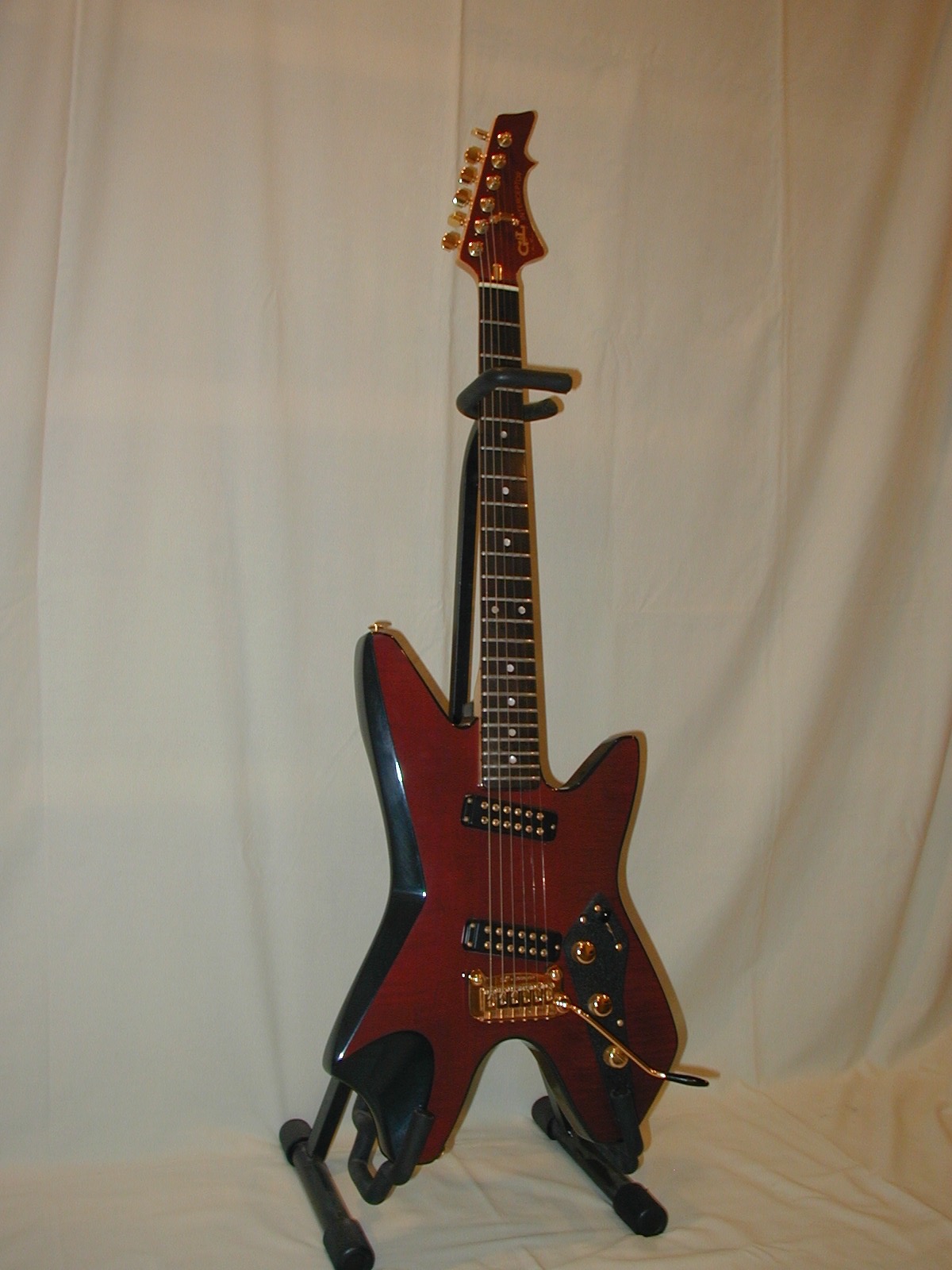
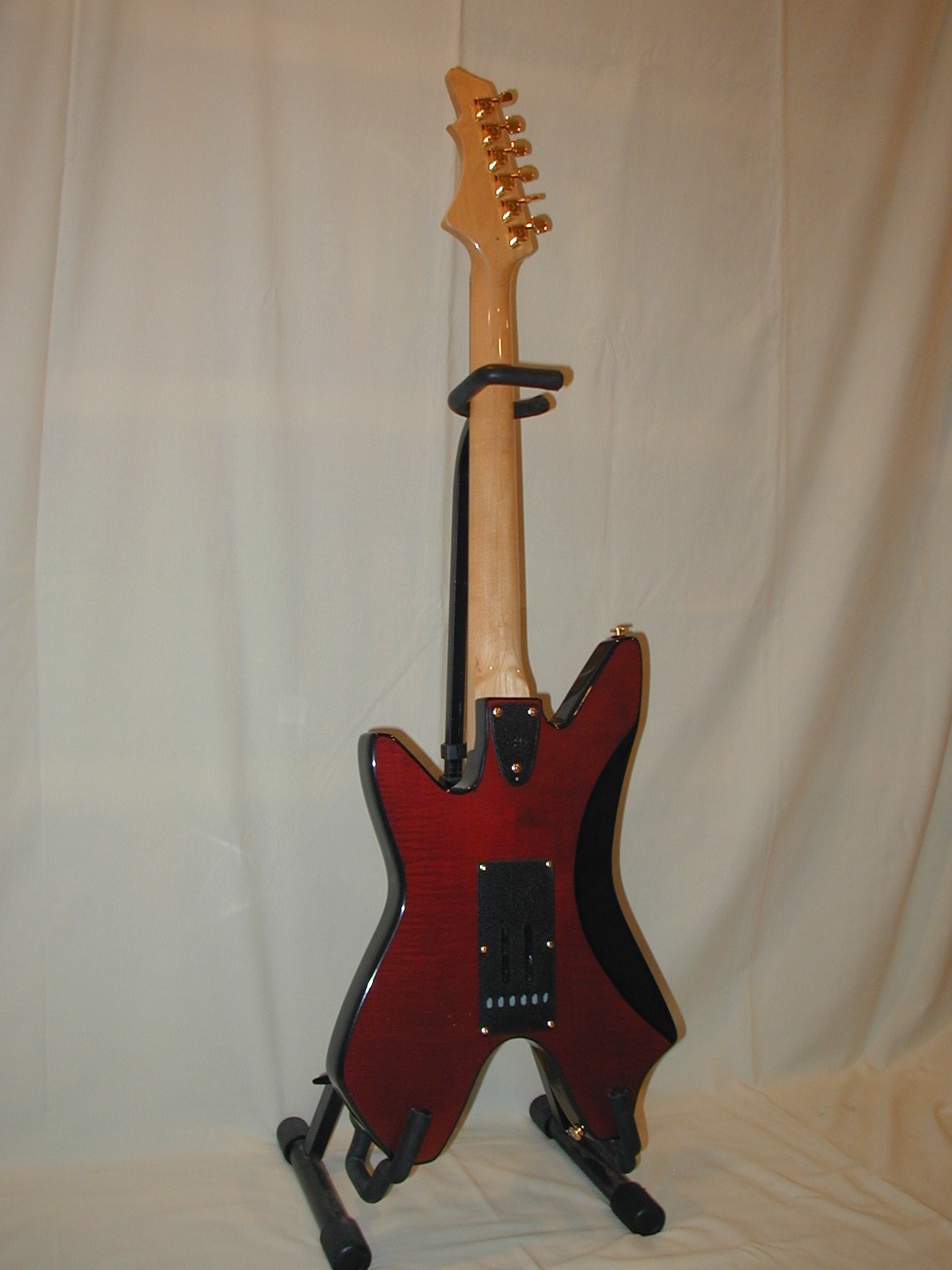
When focussing a little more on the body, there is several interesting observations. The transparent Red in this guitar is a darker, more towards Bordeaux Red, than on other Interceptors. For comparison, the front of the guitar for the next installment is shown with a Red/Black color scheme I will refer to as Clear Red/Black instead of Red-over-Black.
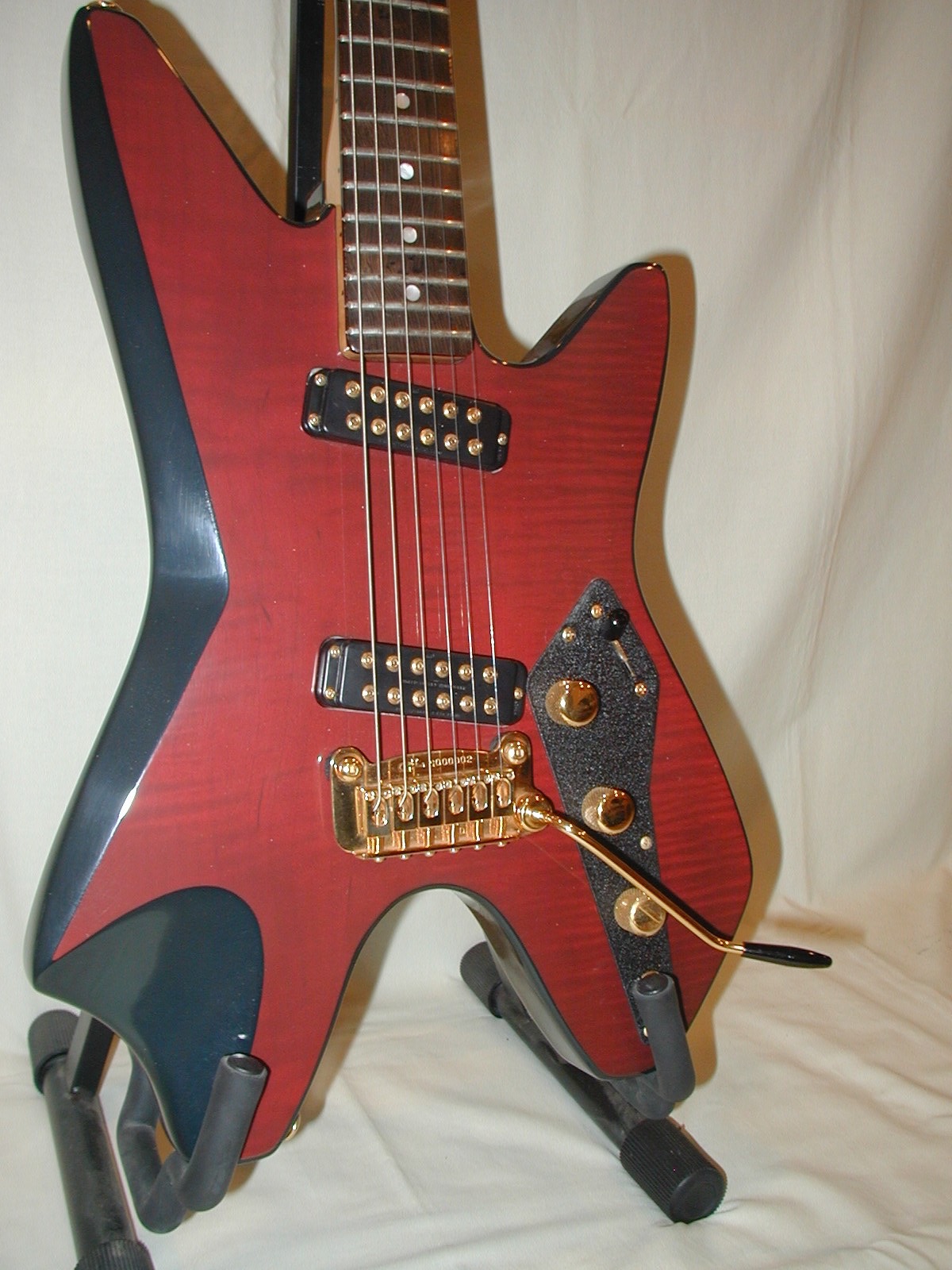
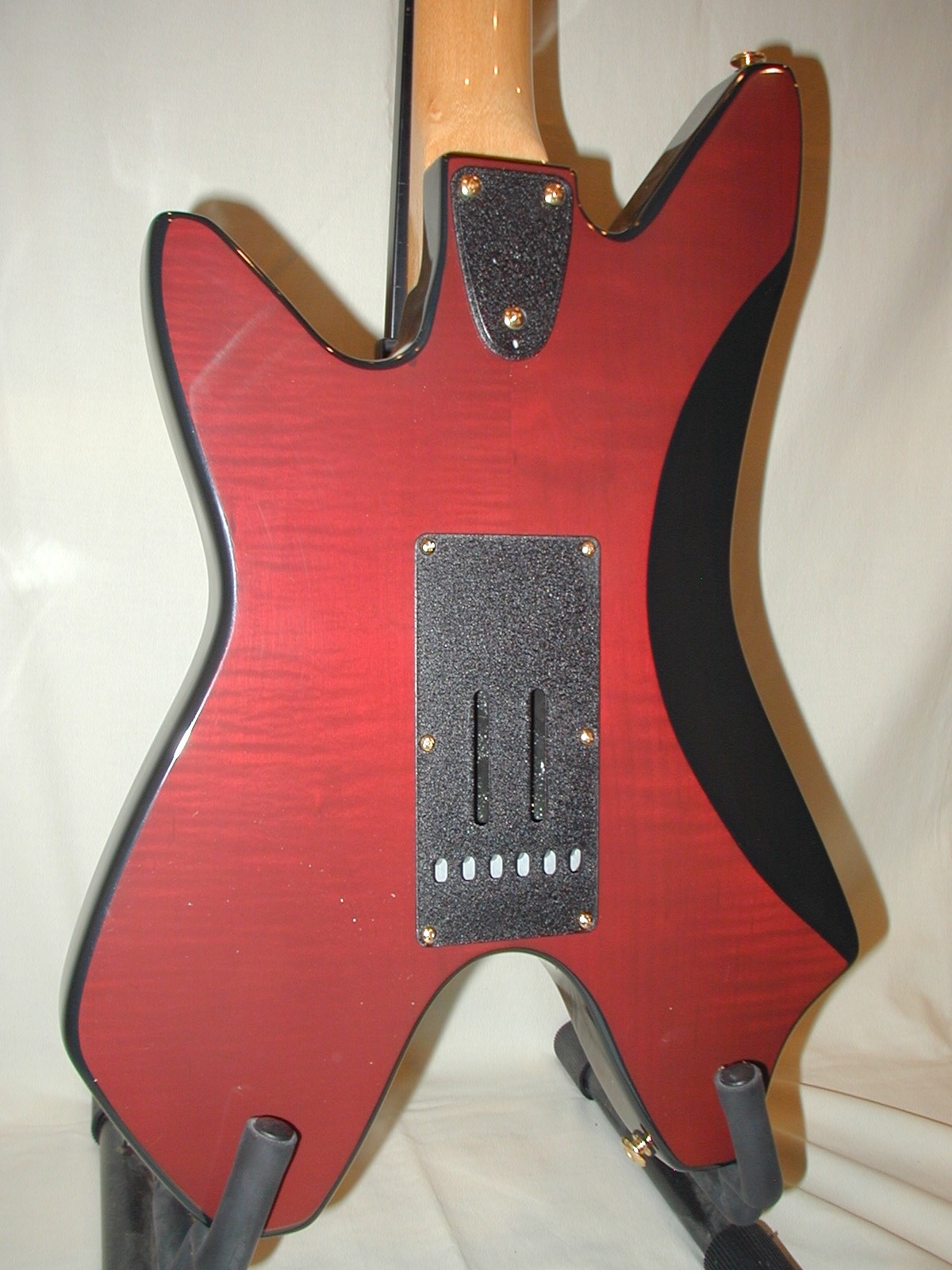

The ergonomics is improved by several cuts, bevels, and contours. Of course most noticeable is how little wood is present behind the bridge. But one also has the arm contour combined with a bevel on both front and back of the body. All of this makes the guitar enormously comfortable to play in any position, standing as well as sitting, something one might not intuit right of the bat. And the color scheme nicely brings out the flame figure in the 2-piece maple body!

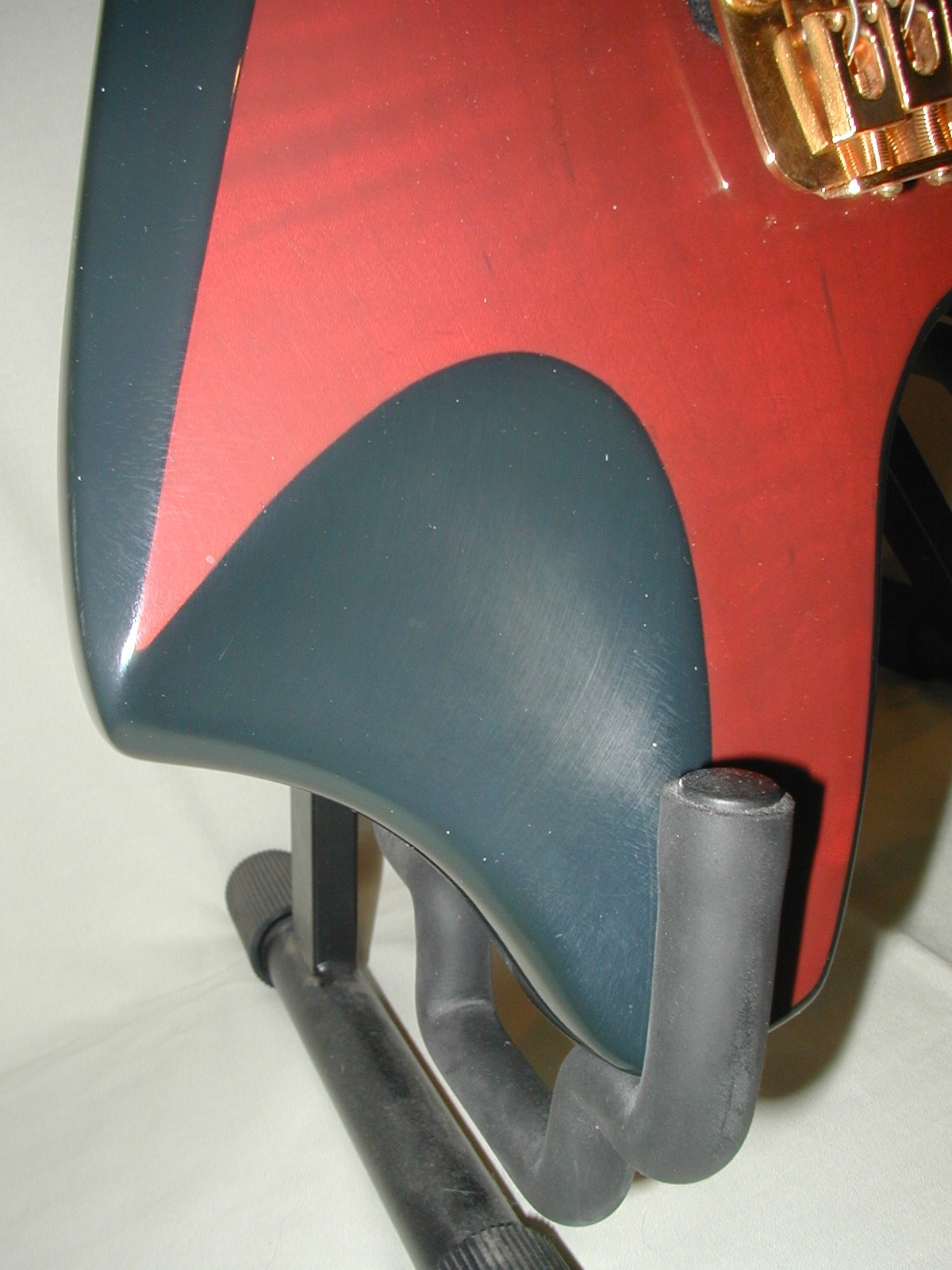
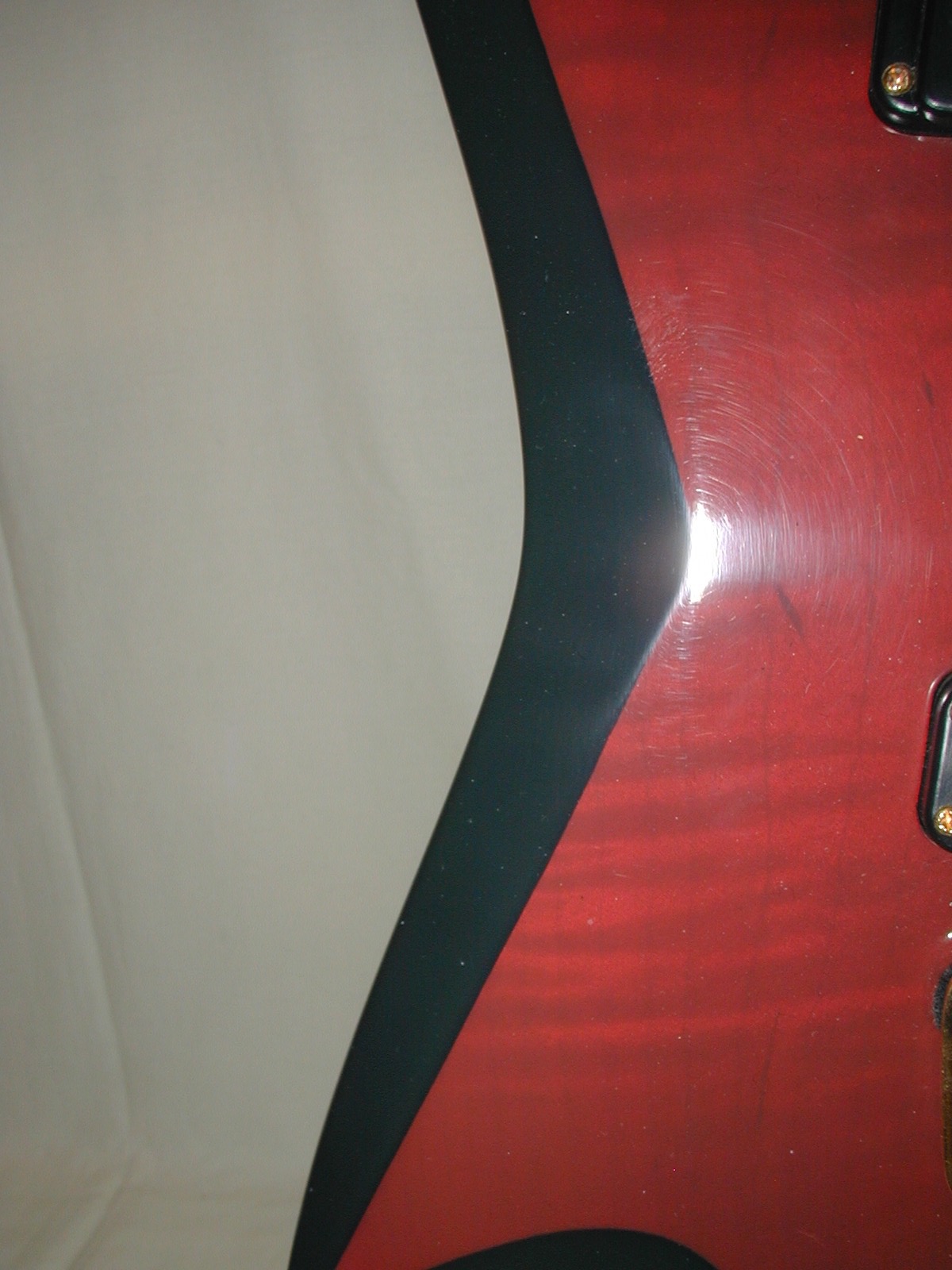
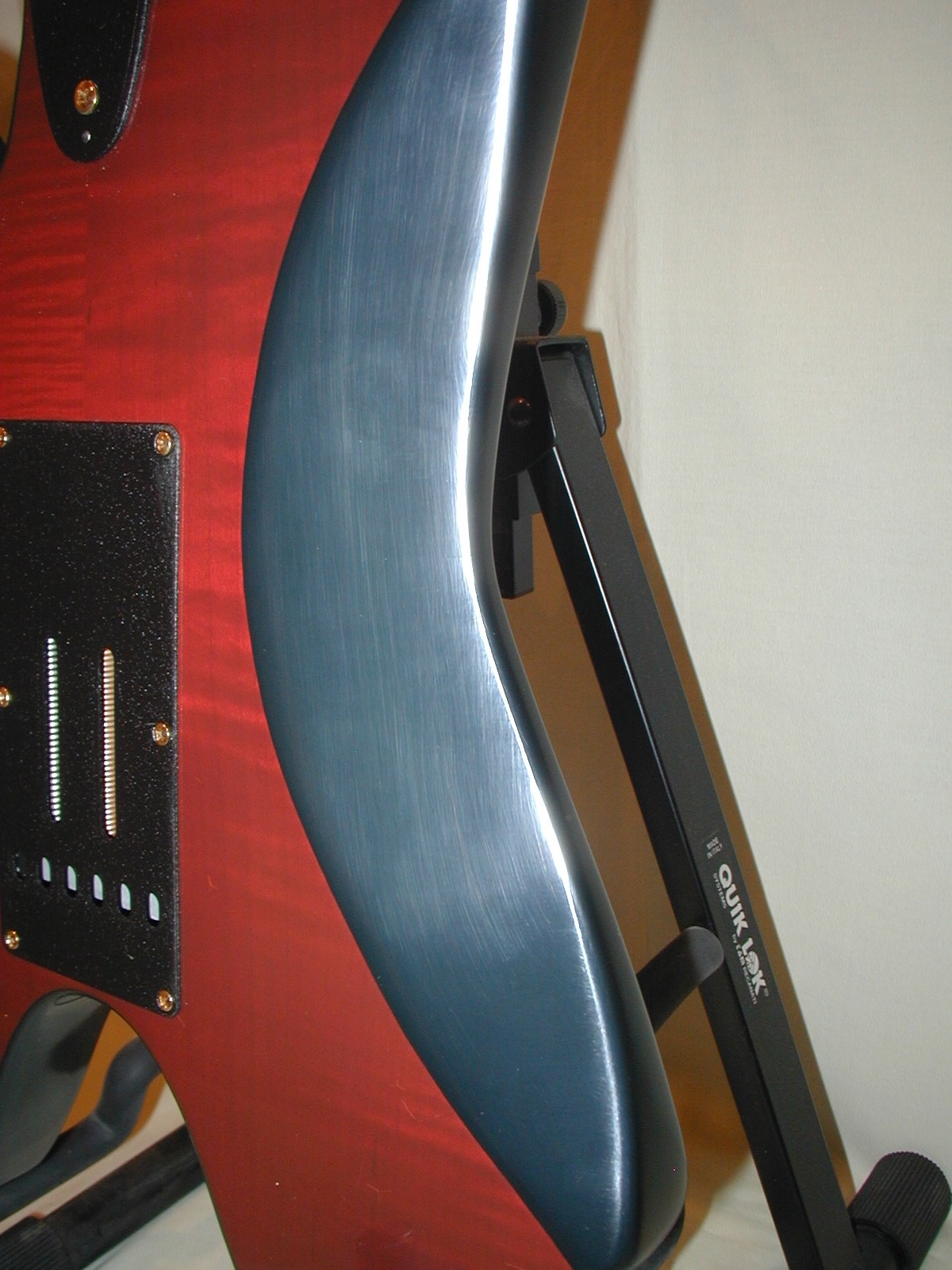
All is accentuated by using gold hardware, including for the bridge, knobs, and pole pieces on the HG-2R pickups. The lead time for G&L stamped gold plated machines turned out to be too long. For this reason, on these early Interceptors, the machines on the color-matched sickle headstock are stamped with the Schaller logo and have screw tab.


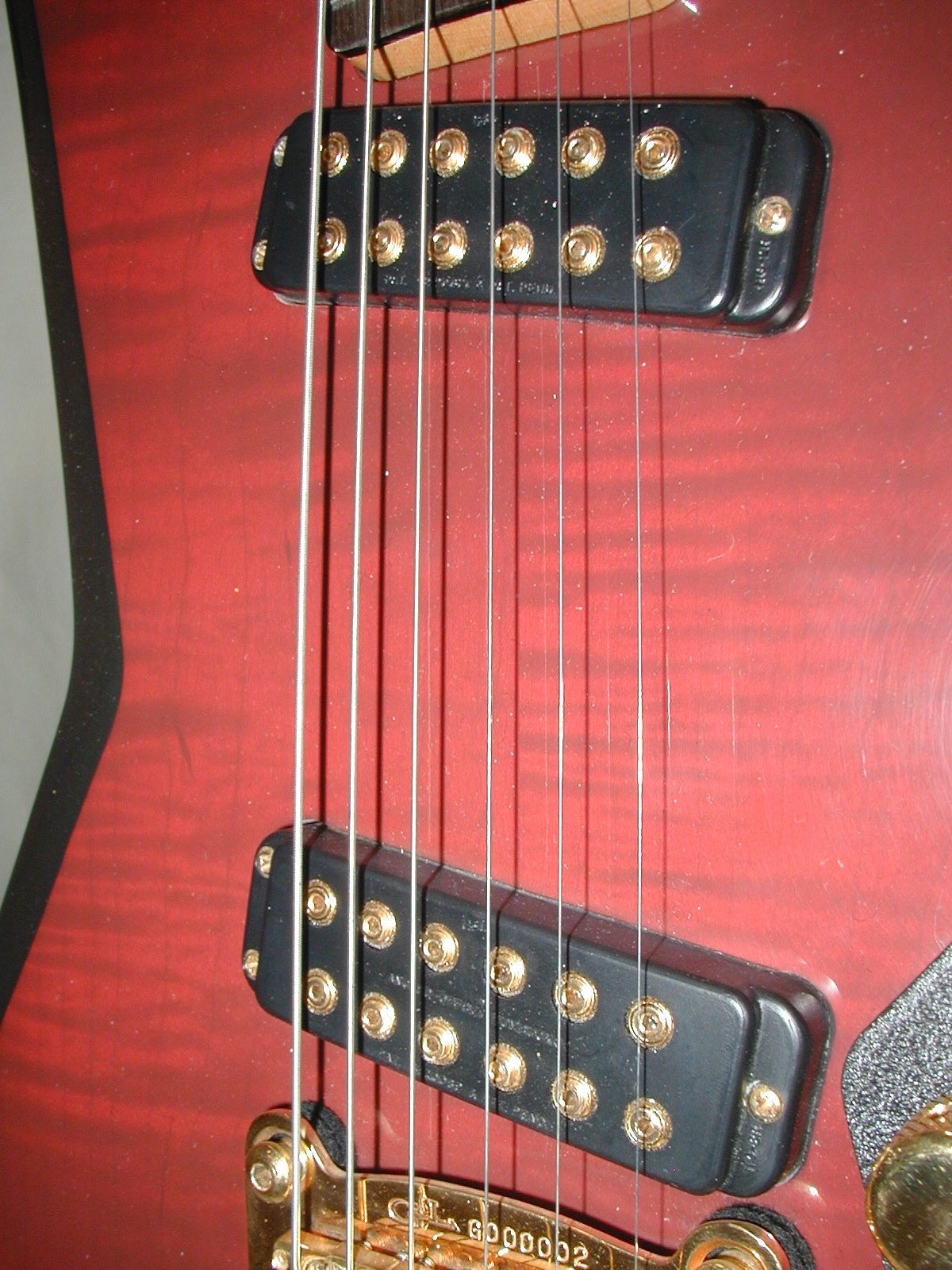
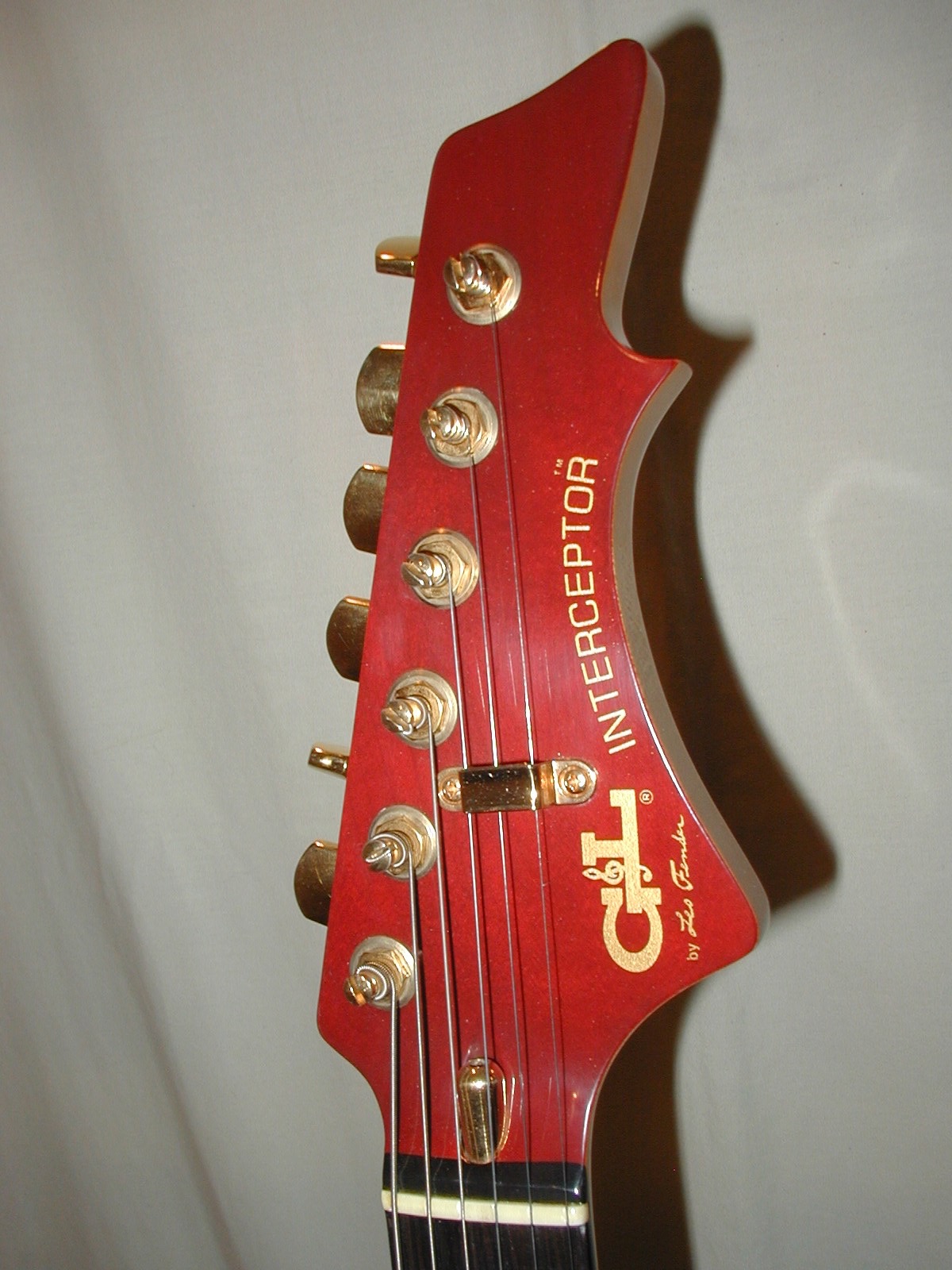
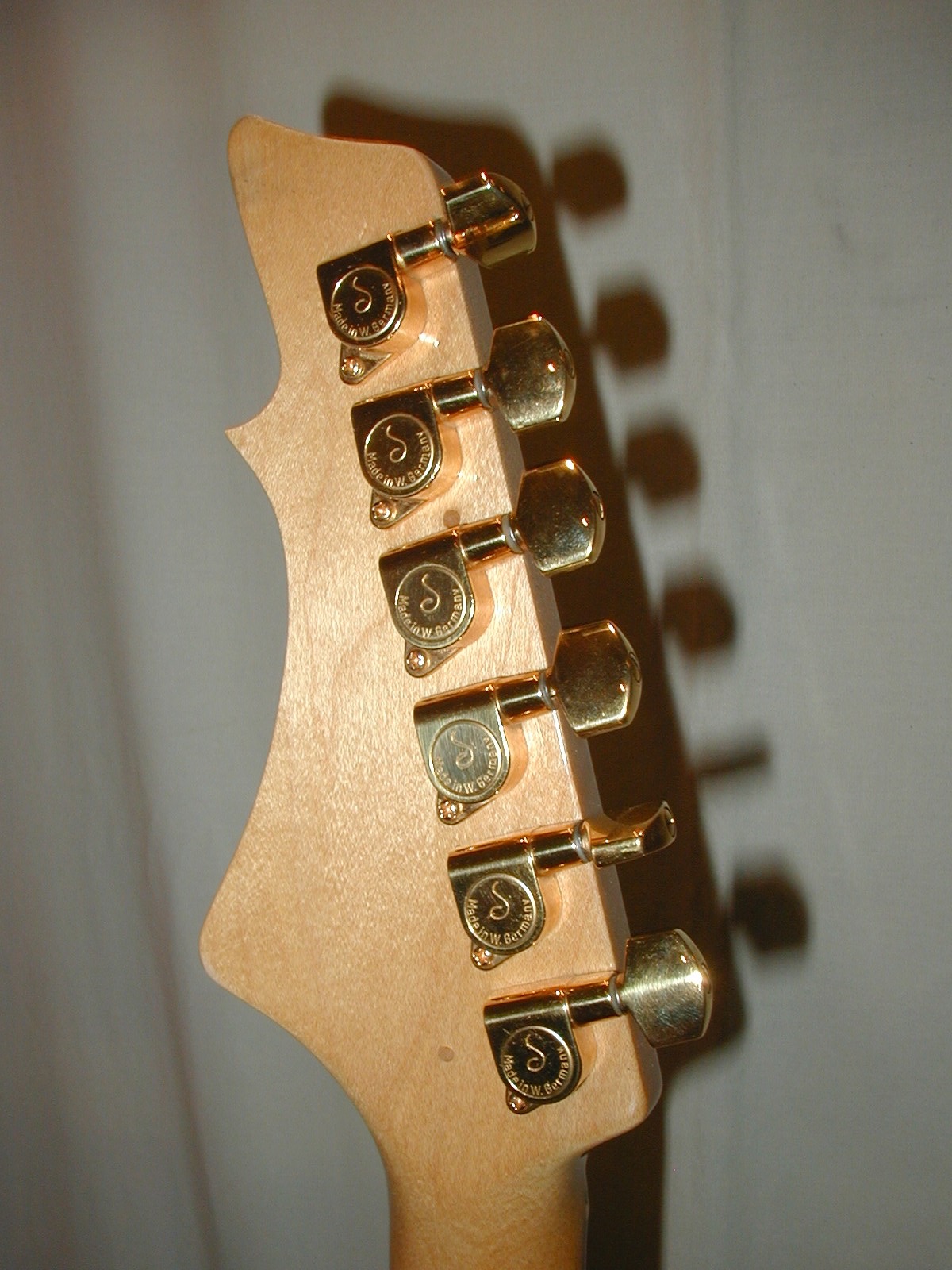
The model decal is a story by itself. Shown here is the official decal with all gold G&L logo and script ”by Leo Fender”. This is one of the earliest appearances, if not the first, of this phrase on the headstock well before it appeared under the model decal on the Broadcaster. However, the very first model logo was handmade by Lloyd Chewning, using waterslide decal letters obtained from the nearest art store and readily available G&L logo. The picture below is courtesy Brendon Vestal, who provided it when I bought his Comanche V prototype and has a similar improvised model decal.
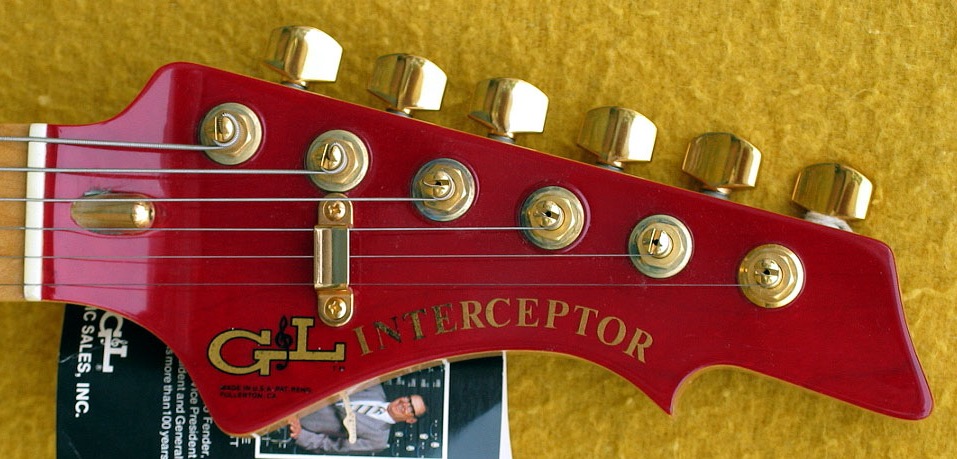
As per usual the Dual Fulcrum Vibrato is balanced with a set consisting of 2 identical (chrome or nickel plated) steel springs on the outside and a copper plated steel spring with a couple of more windings in the center. There is a larger story here why this middle spring is just copper plated. When the F-100 was released in 1980 with the DFV, it only had 2 steel springs. Steel springs are first copper plated and subsequently plated with either chrome or nickel. For the factory standard 9-46 set of strings used in the day, the 2 springs were sufficient to provide an optimal stiffness. However, many players switched to heavier gauges and the available travel in the spring claw was not sufficient enough. In a first iteration, a third spring was added but this led to a response too stiff and/or instability in the DFV. Hence Leo solved the problem by having a spring in the center with a lower spring constant by virtue of thinner diameter steel wire and more turns (37 for the springs on the outside and 43 for the center spring) to keep the length the same. Initially, when introduced in late-1980, the center spring was also nickel or chrome plated. However, in assembly it was too hard to distinguish the one from the other, leading to very inconsistent stiffness of the DFV units between instruments because both types were used interchangeably. Leo ordered to forego nickel or chrome plating of the center spring to solve this, leaving it only only copper plated, which gives the pre-BBE DFV units its much loved unique feel.

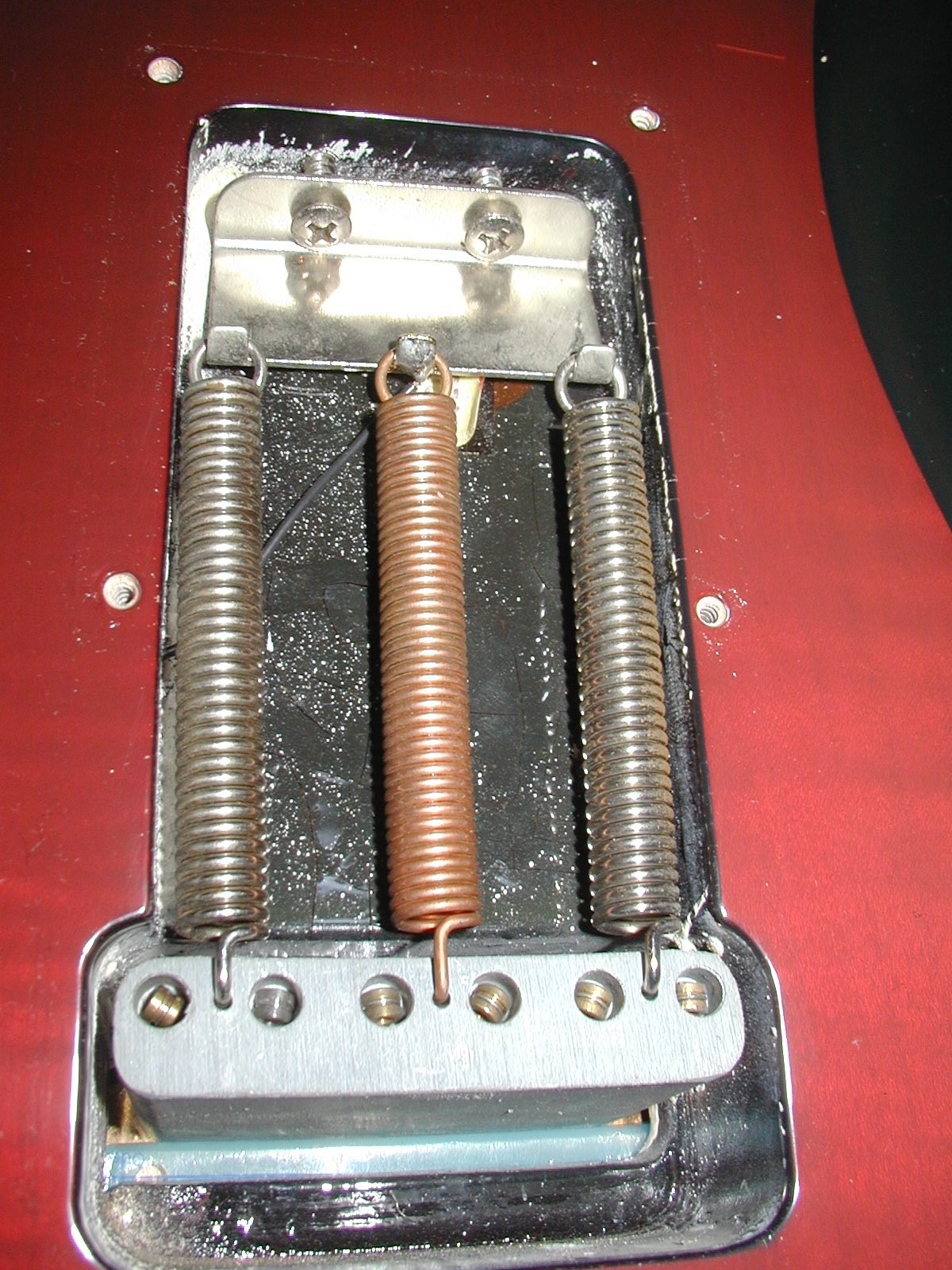
The dates in the pocket and on the neck heel show they are from about a week before the sales log entry. Leo Crabtree put the guitar meticulously together which is not surprising given its intended recipient. But notice that October 5, 1983 is about 6 weeks past the August 24, 1983 entry date in the log! No idea what that is about.
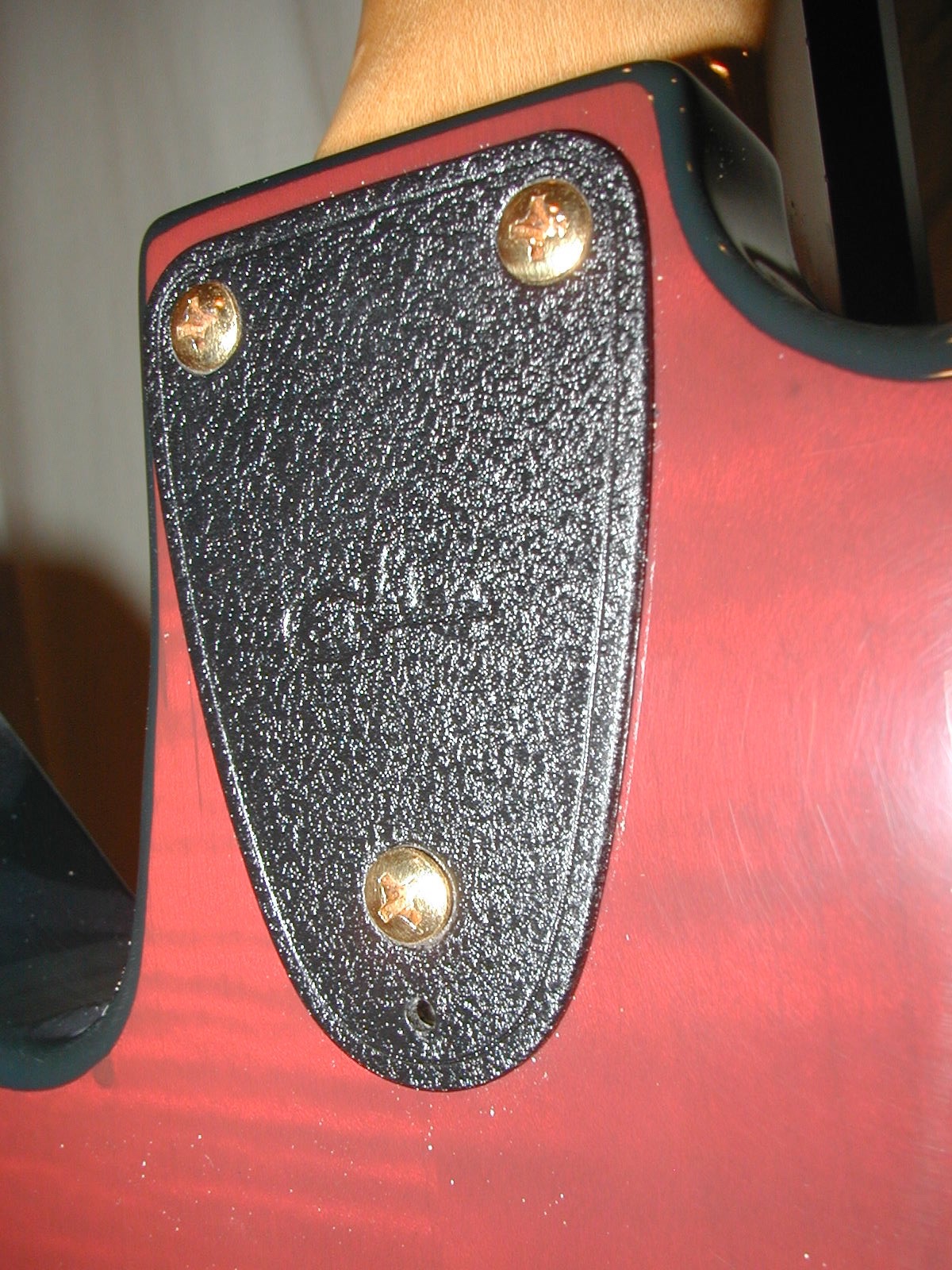
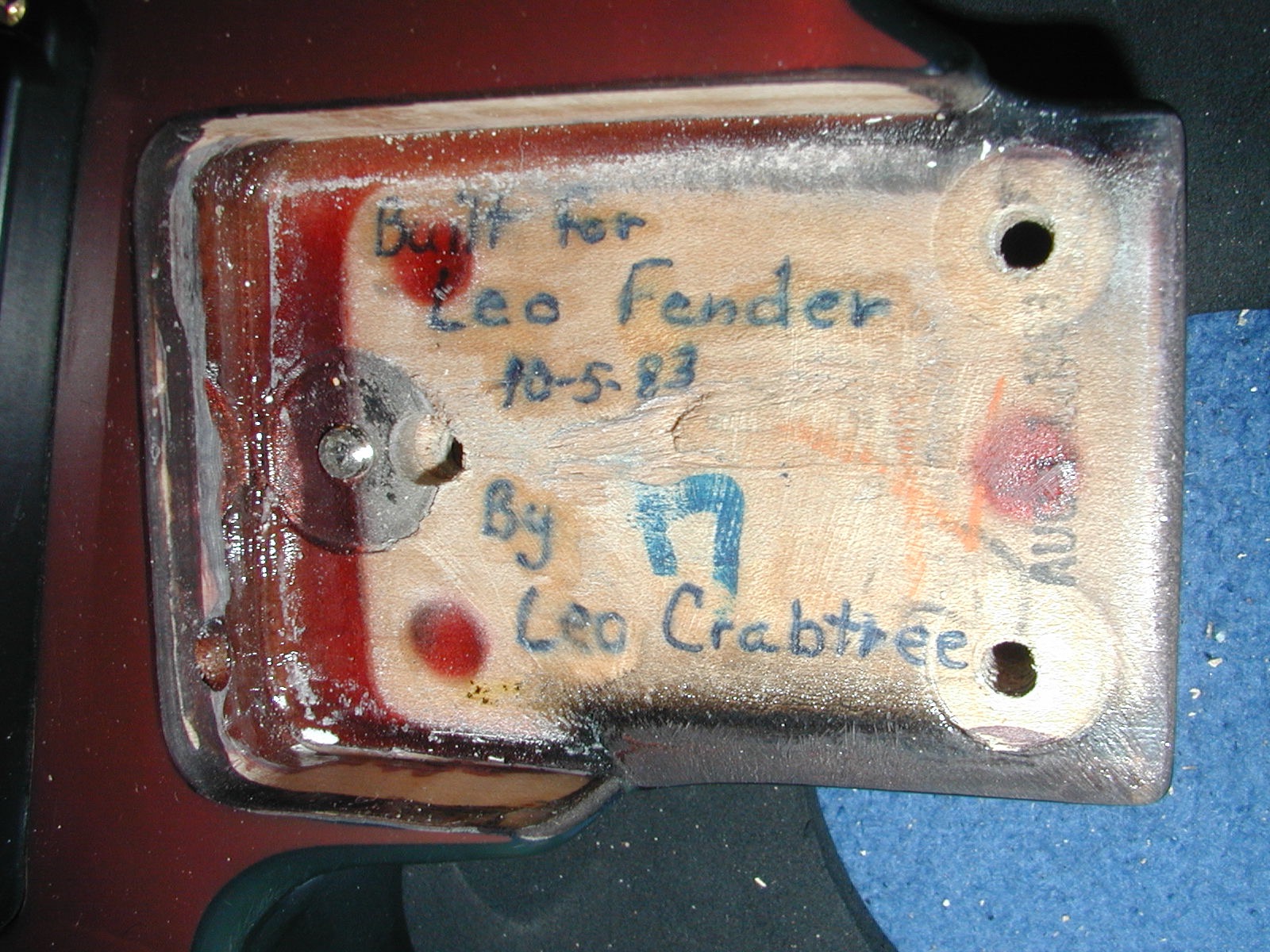
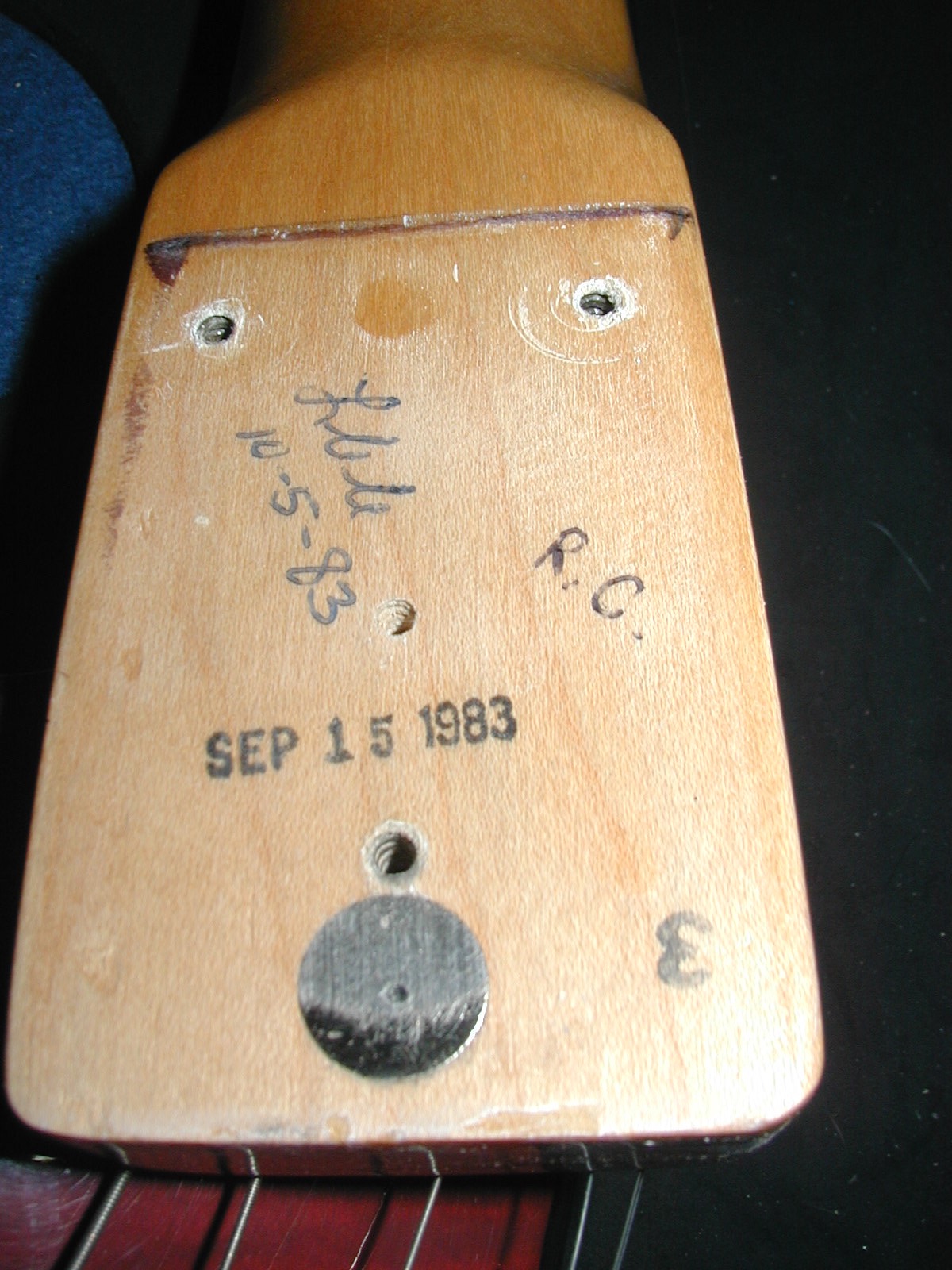
The hard-rock maple (pre-BBE) #2 neck has a 7½” radius ebony fingerboard and 1⅝” nut width and plays like butter. As per usual, the ebony is unstained. After all, why would you?

Beyond the links you find on the Rarebird page, there are a couple of other spots you can check out. If you jones more for an Interceptor II, look at Kevin Giles’ album in the Gallery. Greg Galliano features an Interceptor II on his fabulous ggjaguar.com website.
Well, that is all I have, at least for now. Thanks again to Gabe Dellevigne for a wealth of information on details I would never be able to figure out myself just looking at a single instrument.
- Jos